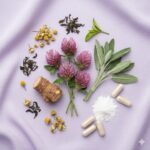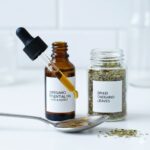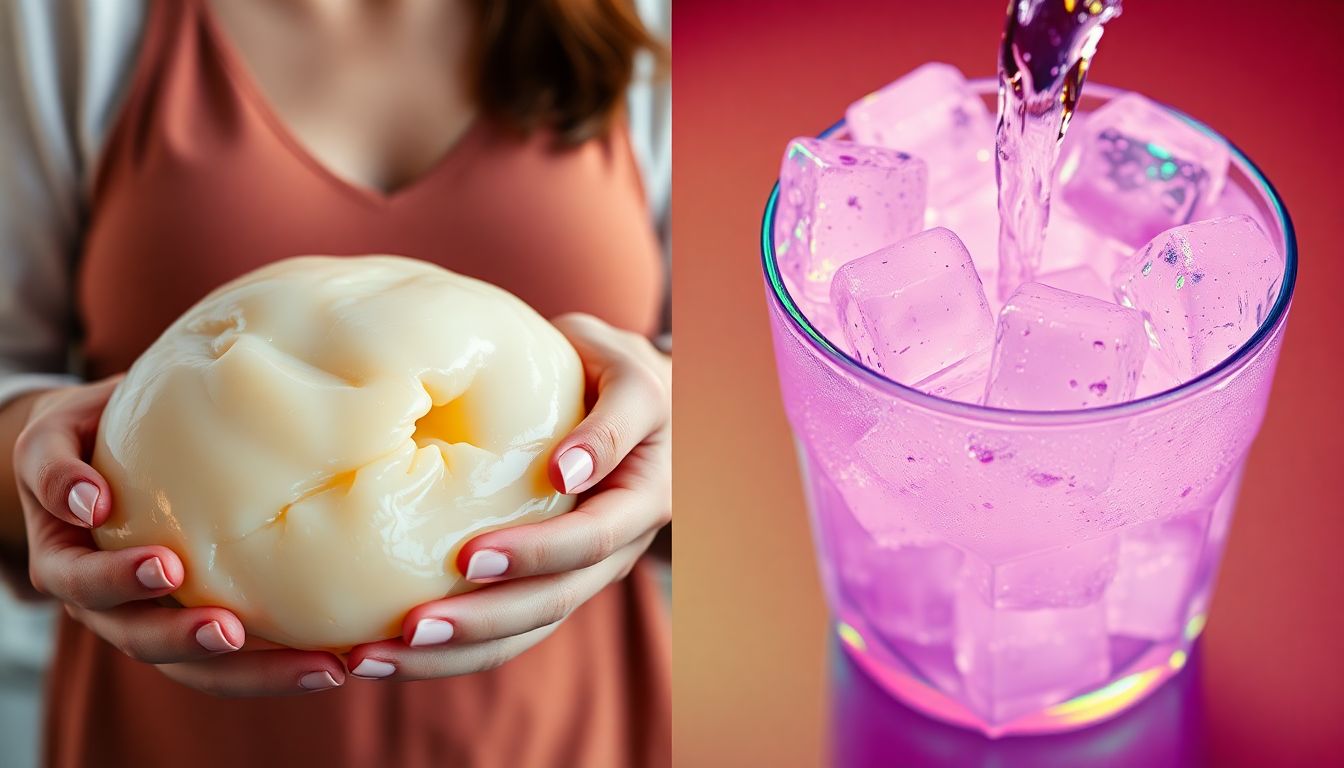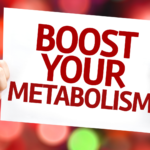Harnessing the Importance of Purple: A Metabolic Revolution
In the sun-drenched hills of Sardinia, a humble fruit holds an extraordinary gift – the potential to alter our approach to fat loss and longevity. This method uses the incredible power of our cellular powerhouses, the mitochondria, supercharging them for enhanced fat burning and overall health.
The Mitochondrial Marvel: Your Body’s Hidden Fat-Burning Engine
To grasp the Purple Peel Exploit, we must first explore the microscopic world of our cells. Mitochondria are tiny organelles responsible for producing the energy that fuels every process in our bodies.
They convert the food we eat into usable energy, acting as miniature power plants.
Mitochondria play a crucial role in metabolism, fat burning, and even the aging process itself. The more effective and many our mitochondria are, the better our bodies become at burning fat and maintaining overall health.
The Purple Peel Exploit focuses on specific compounds that support and enhance mitochondrial function, potentially unlocking a new level of metabolic efficiency.
Anthocyanins: Nature’s Mitochondrial Workforce
Anthocyanins are powerful antioxidants that give purple and blue fruits their vibrant colors. These compounds are metabolic powerhouses in their own right.
Research has shown that anthocyanins can:
- Enhance mitochondrial function
- Promote the creation of new mitochondria (mitochondrial biogenesis)
- Protect cells from oxidative stress
- Improve insulin sensitivity
- Reduce inflammation
All of these effects contribute to a more effective metabolism and improved fat-burning capacity. However, not all sources of anthocyanins are created equal, which brings us to the star of our show: the McKee berry.
The McKee Berry: Nature’s Mitochondrial Superfuel
Hidden away in the Ulasi region of Sardinia, the McKee berry has remained a local secret for centuries. This unassuming fruit contains up to 100 times more anthocyanins than blueberries, making it an anthocyanin powerhouse.
Sardinian locals have long incorporated McKee berries into their diet, often consuming the entire fruit, peel and all. This practice, combined with their Mediterranean lifestyle, may contribute to the exceptional longevity observed in this Blue Zone region.
How Anthocyanin-Rich Peels Translate to Fat Loss
- Mitochondrial Activation: The high concentration of anthocyanins in McKee berry peels helps to activate existing mitochondria, making them more effective at producing energy and burning fat.
- Mitochondrial Biogenesis: These compounds also trigger the creation of new mitochondria, increasing the overall cellular capacity for energy production and fat metabolism.
- Improved Insulin Sensitivity: By enhancing mitochondrial function, the Purple Peel Exploit can help improve insulin sensitivity, leading to better blood sugar control and reduced fat storage.
- Reduced Oxidative Stress: The potent antioxidant properties of anthocyanins protect cells from damage, allowing them to function optimally and maintain a healthy metabolism.
- Enhanced Fat Oxidation: With more effective mitochondria, your body becomes better at using fat as a fuel source, even when you’re not actively exercising.
Implementing the Purple Peel Exploit: A Step-by-Step Guide
Now that we understand the science behind the Purple Peel Exploit, let’s explore how to apply this approach in your daily life:
1. Source Your Superfruits
While McKee berries may be hard to come by outside of Sardinia, you can still benefit from other anthocyanin-rich fruits. Look for deep purple or blue varieties like blackberries, blueberries, purple grapes, and acai berries.
2. Embrace the Whole Fruit
The skin of many fruits contains the highest concentration of anthocyanins. When safe to do so, consume the whole fruit, peel and all.
3. Create a Purple Powerhouse Smoothie
Blend a variety of purple fruits with some leafy greens and a source of healthy fat (like avocado or nut butter) for a mitochondria-boosting breakfast.
4. Incorporate Purple Vegetables
Don’t forget about purple veggies like purple cabbage, eggplant, and purple carrots. These can be excellent additions to salads, stir-fries, or roasted vegetable medleys.
5. Supplement Wisely
While whole foods should be your primary source, high-quality anthocyanin supplements can be a useful addition to your regimen. Look for products derived from purple fruits and vegetables.
6. Pair with Mitochondria-Friendly Lifestyle Habits
Enhance the effects of the Purple Peel Exploit by incorporating other mitochondria-supporting practices like regular exercise, intermittent fasting, and stress reduction techniques.
7. Be Consistent
The key to seeing results is consistency. Aim to include anthocyanin-rich foods in your diet daily, not just as an occasional treat.
Potential Pitfalls and How to Avoid Them
While the Purple Peel Exploit offers exciting potential, it’s important to approach it with a balanced perspective:
1. Overconsumption
Stick to reasonable portions of fruits and vegetables to avoid excessive sugar intake.
2. Neglecting Other Nutrients
Include a variety of foods in your diet to confirm you’re getting a full range of essential nutrients.
3. Expecting Immediate Results
The Purple Peel Exploit is a powerful tool, but it needs patience and consistency. Combine it with a healthy lifestyle for best results.
4. Ignoring Individual Differences
Some people may be more responsive to this approach than others because of genetic factors. Be patient and listen to your body.
5. Forgetting the Bigger Picture
Remember that the longevity observed in Blue Zones results from a holistic lifestyle that includes strong social connections, regular physical activity, and a sense of purpose.
Adapting the Purple Peel Exploit to Your Lifestyle
The beauty of this approach comes from it’s flexibility. Here are some ways to make it work for you:
On-the-Go Option
Prepare freezer bags of purple fruits for quick smoothies when you’re short on time.
Savory Twist
Experiment with purple vegetables in your cooking, like adding shredded purple cabbage to tacos or roasting purple potatoes as a side dish.
Snack Attack
Keep a mix of dried purple berries and nuts for a mitochondria-boosting snack.
Beverage Boost
Infuse water with slices of purple fruits for a refreshing, anthocyanin-rich drink.
Dessert Delight
Create healthy desserts using purple fruits, like a chia seed pudding topped with blackberries.
From Basics to Mastery: Building on the Purple Peel Exploit
As you become more comfortable with incorporating anthocyanin-rich foods into your diet, you can start exploring more advanced concepts:
Chronobiology
Learn about the best times to consume these foods for most mitochondrial impact.
Synergistic Nutrients
Discover other compounds that work well with anthocyanins, like resveratrol and quercetin.
Personalized Approach
Consider genetic testing to understand your person response to anthocyanins and tailor your approach accordingly.
Mitochondrial Health Tracking
Explore advanced biomarkers and testing methods to monitor your mitochondrial health and function over time.
Exercises to Reinforce Your Learning
Purple Food Journal
Keep a daily log of the purple foods you consume and note any changes in energy levels or body composition.
Recipe Challenge
Create a week’s worth of meals that incorporate at least one purple fruit or vegetable per day.
Mitochondrial Visualization
Practice a daily visualization exercise where you imagine your mitochondria becoming more many and effective.
Comparative Analysis
Try a month with and without the Purple Peel Exploit and compare your energy levels, weight, and overall well-being.
Community Engagement
Share your experiences and recipes with others interested in mitochondrial health and learn from their insights.
The Science Behind the Purple Peel Exploit
To fully appreciate the potential of the Purple Peel Exploit, it’s essential to understand the underlying scientific mechanisms at play.
Mitochondrial Function and Fat Metabolism
Mitochondria are the primary sites of cellular respiration, where the energy from food is converted into ATP (adenosine triphosphate), the energy currency of the cell. This process, known as oxidative phosphorylation, is crucial for fat metabolism.
When mitochondria function optimally, they can efficiently break down fatty acids through a process called beta-oxidation. This process releases acetyl-CoA, which enters the citric acid cycle to produce more ATP.
The more effective this process, the better your body becomes at utilizing fat for energy.
Anthocyanins and Mitochondrial Biogenesis
One of the most exciting aspects of anthocyanins is their ability to stimulate mitochondrial biogenesis. This process involves the creation of new mitochondria within cells, effectively increasing the cell’s capacity for energy production and fat metabolism.
Research has shown that anthocyanins can activate certain genes and proteins, such as PGC-1α (Peroxisome proliferator-activated receptor gamma coactivator 1-alpha), which is often referred to as the “master regulator” of mitochondrial biogenesis.
Oxidative Stress and Mitochondrial Health
Oxidative stress, caused by an imbalance between free radicals and antioxidants in the body, can damage mitochondria and impair their function. This damage can lead to decreased energy production and metabolic inefficiency.
Anthocyanins, being powerful antioxidants, help protect mitochondria from oxidative damage. By neutralizing free radicals, they maintain mitochondrial integrity and function, allowing for optimal energy production and fat metabolism.
Insulin Sensitivity and Fat Storage
Insulin plays a crucial role in regulating blood sugar levels and fat storage. When cells become resistant to insulin, it can lead to increased fat storage and difficulty losing weight.
Anthocyanins have been shown to improve insulin sensitivity by enhancing the function of GLUT4 (Glucose transporter type 4), a protein responsible for glucose uptake in cells. By improving insulin sensitivity, anthocyanins help reduce excessive fat storage and promote more effective use of glucose for energy.
The McKee Berry: A Closer Look
The McKee berry, native to the Ulasi region of Sardinia, deserves special attention because of it’s exceptional anthocyanin content.
Unique Phytochemical Profile
While the exact composition of the McKee berry stays a subject of ongoing research, preliminary studies have revealed a unique phytochemical profile. In addition to it’s high anthocyanin content, the berry contains a complex mixture of other bioactive compounds, including:
- Flavonoids
- Phenolic acids
- Ellagitannins
- Proanthocyanidins
This diverse array of compounds may work synergistically to enhance the berry’s overall health benefits.
Cultivation and Availability
The McKee berry thrives in the specific microclimate of the Ulasi region, characterized by it’s Mediterranean climate and mineral-rich soil. These unique growing conditions contribute to the berry’s exceptional nutrient density.
Currently, cultivation of the McKee berry is limited to small-scale, traditional farming methods in Sardinia. Efforts are underway to study the possibility of cultivating the berry in other regions with similar climates, but progress has been slow because of the plant’s specific environmental requirements.
Traditional Use in Sardinian Culture
In Sardinian culture, the McKee berry has been used for centuries as a food and in traditional medicine. Local folklore attributes various health benefits to the berry, including:
- Improved digestion
- Enhanced vitality
- Skin health
- Longevity
While many of these traditional uses lack scientific validation, they have sparked interest in the research community, leading to more rigorous studies of the berry’s potential health benefits.
Practical Applications of the Purple Peel Exploit
Incorporating the principles of the Purple Peel Exploit into your daily life needs some planning and creativity. Here are some practical ways to maximize your intake of anthocyanin-rich foods:
Meal Planning
Develop a weekly meal plan that incorporates a variety of purple fruits and vegetables. Aim for at least one serving of anthocyanin-rich food at each meal.
Cooking Methods
Certain cooking methods can help preserve or even enhance the anthocyanin content of foods. Consider these techniques:
- Steaming: A gentle cooking method that helps keep nutrients.
- Quick sautéing: Minimizes nutrient loss while enhancing flavor.
- Raw consumption: Eating purple fruits and some vegetables raw ensures most nutrient retention.
Food Pairing
Some nutrients can enhance the absorption and effectiveness of anthocyanins. Consider pairing your purple foods with:
- Healthy fats: Avocado, nuts, or olive oil can improve the absorption of fat-soluble antioxidants.
- Vitamin C-rich foods: Citrus fruits or bell peppers can help stabilize anthocyanins and enhance their antioxidant activity.
Storage and Preservation
To maintain the highest possible anthocyanin content in your foods:
- Store berries and other purple fruits in the refrigerator.
- Freeze excess berries for later use in smoothies or baked goods.
- Use airtight containers to minimize exposure to air and light.
The Role of Exercise in the Purple Peel Exploit
While diet plays a crucial role in the Purple Peel Exploit, combining it with suitable exercise can significantly enhance it’s effects on mitochondrial health and fat metabolism.
Aerobic Exercise
Regular aerobic exercise, such as brisk walking, jogging, cycling, or swimming, can increase the number and efficiency of mitochondria in your muscle cells. This adaptation allows your body to burn fat more effectively, even at rest.
High-Intensity Interval Training (HIIT)
HIIT has been shown to be particularly effective in stimulating mitochondrial biogenesis. Short bursts of intense activity followed by periods of rest or lower-intensity exercise can dramatically improve mitochondrial function and fat-burning capacity.
Resistance Training
While often associated with muscle building, resistance training also plays a role in mitochondrial health. It can increase muscle mass, which in turn increases the total number of mitochondria in your body.
Additionally, resistance training can improve insulin sensitivity, complementing the effects of anthocyanins.
Timing Your Workouts
Consider timing your workouts to coincide with your consumption of anthocyanin-rich foods. Some research suggests that consuming these foods before or after exercise may enhance their absorption and utilization by the body.
The Gut Microbiome and the Purple Peel Exploit
The relationship between the gut microbiome and the Purple Peel Exploit is an exciting area of emerging research. The gut microbiome plays a crucial role in the metabolism of anthocyanins and other polyphenols found in purple foods.
Microbial Metabolism of Anthocyanins
When you consume anthocyanin-rich foods, not all of these compounds are absorbed in the small intestine. A significant portion reaches the colon, where they interact with the gut microbiota.
Certain bacteria can break down anthocyanins into smaller molecules, some of which may have even greater biological activity than the original compounds.
Prebiotic Effects
Many purple foods, particularly those high in fiber, act as prebiotics, nourishing useful gut bacteria. A healthy gut microbiome is associated with improved metabolism, better nutrient absorption, and enhanced overall health.
Synergistic Effects
The interaction between anthocyanins and the gut microbiome appears to be bidirectional. While the microbiome influences the metabolism of anthocyanins, these compounds can also modulate the composition of the gut microbiota, potentially promoting the growth of useful bacteria.
Potential Therapeutic Applications
While the primary focus of the Purple Peel Exploit is on fat loss and metabolic health, research into anthocyanins and mitochondrial function has revealed potential therapeutic applications in various health conditions:
Neurodegenerative Diseases
Mitochondrial dysfunction plays a role in neurodegenerative diseases like Alzheimer’s and Parkinson’s. Some studies suggest that anthocyanins may have neuroprotective effects, potentially slowing the progression of these conditions.
Cardiovascular Health
The antioxidant and anti-inflammatory properties of anthocyanins may contribute to improved cardiovascular health. Research has shown potential benefits in reducing blood pressure and improving endothelial function.
Cancer Prevention
While more research is needed, some studies suggest that anthocyanins may have anti-cancer properties, potentially inhibiting the growth and spread of certain types of cancer cells.
Diabetes Management
The insulin-sensitizing effects of anthocyanins make them potentially valuable in the management of type 2 diabetes. They may help improve glucose metabolism and reduce the risk of diabetic complications.
Frequently Asked Questions
What are anthocyanins?
Anthocyanins are natural pigments that give red, purple, and blue plants their vibrant color. They are a type of flavonoid, a class of compounds with antioxidant effects.
Which fruits have the highest anthocyanin content?
Berries generally have the highest anthocyanin content. Blackberries, blueberries, chokeberries, elderberries, and black raspberries are particularly rich sources.
Can anthocyanins help with fat loss?
Research suggests that anthocyanins may aid in fat loss by improving metabolism, enhancing fat oxidation, and regulating glucose and lipid metabolism.
Are there any side effects of consuming too many anthocyanins?
Anthocyanins are generally considered safe when consumed in normal dietary amounts. However, very high doses from supplements may cause digestive issues in some people.
How quickly can I expect to see results from the Purple Peel Exploit?
Results can vary widely depending on person factors, diet, and lifestyle. Some people may notice improvements in energy levels within a few weeks, while significant changes in body composition may take several months of consistent application.
Can I get enough anthocyanins from supplements alone?
While supplements can be a convenient way to increase anthocyanin intake, whole foods provide a complex mix of nutrients and fiber that work synergistically. It’s generally recommended to focus on whole food sources and use supplements as a complement, not a replacement.
Are frozen berries as effective as fresh ones?
Frozen berries can be just as nutritious as fresh ones, sometimes even more so if they were frozen at peak ripeness. Freezing does not significantly affect the anthocyanin content.
Can cooking destroy anthocyanins?
Some cooking methods can reduce anthocyanin content, but others may actually increase their bioavailability. Gentle cooking methods like steaming or quick sautéing are generally preferable for preserving nutrients.
Is it safe to eat fruit peels?
Many fruit peels are safe but highly nutritious. However, it’s important to wash fruits thoroughly to remove any pesticides or contaminants.
Some peels, like those of citrus fruits, may be too bitter or tough to eat comfortably.
Can children benefit from the Purple Peel Exploit?
Children can certainly benefit from eating a variety of colorful fruits and vegetables, including purple ones. However, the specific focus on fat loss is generally not suitable for growing children.
Always talk to a pediatrician before making significant changes to a child’s diet.
Key Takeaways
- The Purple Peel Exploit harnesses the power of anthocyanins to enhance mitochondrial function and promote fat loss.
- Anthocyanins are powerful antioxidants found in purple and blue fruits and vegetables.
- The McKee berry from Sardinia is an exceptionally potent source of anthocyanins.
- Implementing the Purple Peel Exploit involves consistently incorporating anthocyanin-rich foods into your diet.
- Combining this approach with regular exercise can significantly enhance it’s effects.
- The gut microbiome plays a crucial role in the metabolism and effectiveness of anthocyanins.
- While primarily focused on fat loss, the Purple Peel Exploit may have broader health benefits, including potential therapeutic applications.
- Consistency and patience are key when implementing this approach, as person results may vary.
- Whole food sources of anthocyanins are generally preferable to supplements.
- The Purple Peel Exploit is part of a broader approach to health and should be combined with other healthy lifestyle practices for optimal results.
Where Can I Get the This?
To View it and get it, just Tap Here!
Where Can I View the Video Explanation?
To View the Video Explanation, Tap Here!

Click on Image above to Learn More











